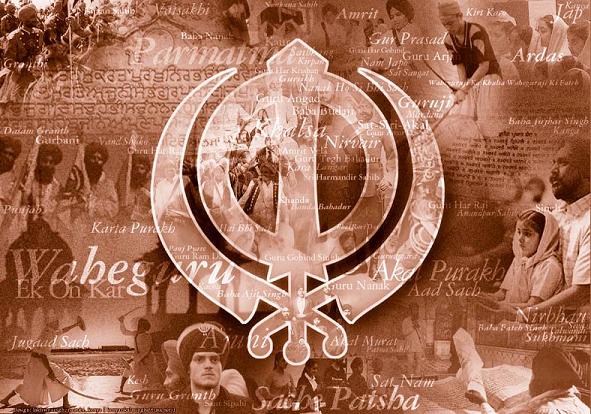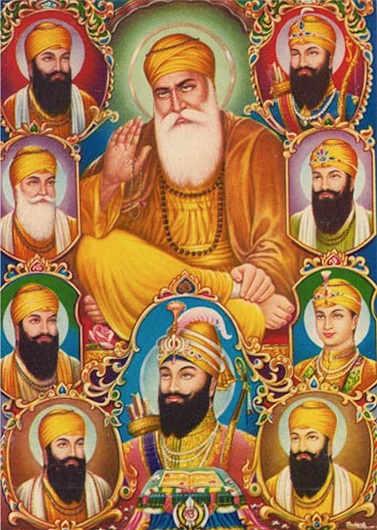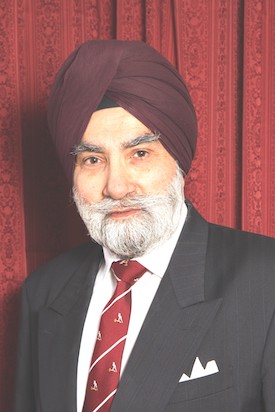December, the Most Moving Month In Gur-Ithas
The significance of the month of December for the Sikhs is summarised by renowned kirtania-writer, Dya Singh of Australia as follows:-
“ The month of December is one of the most touching and moving months in Gur-Itihas [Guru-history]. The siege of Anandpur Sahib and the starving Sikhs in the Anandpur Fort with Guru Gobind Singh; daily the number of Sikhs who could fight, dwindling; the leaving of Anandpur Fort under false promises of safe passage sworn on the Koran [and similar sacred promises by treacherous Hindu hill rajas]; the deadly attack at Sirsa River; the separation of the family of Guru Ji; the betrayal of Mata Gujri by Gangu, the Kashmiri Brahmin [cook in Guru household]; the torture and killing of the Shotay Sahibzaday and martyrdom of Mata Gujri; the epic battle of Chamkaur; the deaths in battle of the Vadday Sahibzaday; and the return to the Guru and Shahidhi of the Chali Muktay led by Bhai Mahan Singh and the legendary Mai Bhago. So, please remember this entire passage of our lofty history as you enjoy the festive end-of-year period.”
No apologies for the longish quote above because it is an excellent summary of the great significance of the month of December for the Sikhs.
It is the concluding sentence which reminds us that while we should join in the seasonal and even religious festivities of the communities we live in, we should also continue to research and discover own family and community heritage and history, the treasure left behind by our ancestors (Peo daaday da khajana).
Regrettably, some of the best educated holders of senior-most positions, born in Sikh families and brought up by hard-working, first generation Sikh parents, have preferred by own choice to remain ignorant about their great Sikh virsa (heritage). Too readily, their parents are blamed for not educating them about Sikhi and Sikh history. Yet, the first-generation hardworking Sikh immigrants in South-East Asian, African and Western countries not only raised own families and gave their children the best education, but also built gurdwaras as Sikh centres and even started movements to liberate their Des Panjab and the Indian sub-continent from colonial rule. They could hardly write but they did make Sikh history, which inspired Indian diversity towards a common cause – the freedom of undivided India.
Sometimes, I am amused to read about some “first Sikh” in this or that field. That may be true in one sense when senior-most positions are achieved. Sometimes “the first Sikh” claim is not true in any sense. It can be a sign of complex about the great achievements of our ancestors and the Sikh nation. Nevertheless, it is most refreshing to see Sikhs who have owned their identity and heritage, reaching for the stars! More such news, more the spiritual satisfaction of the community elders and mentors.
These were the thoughts in my mind as I Google-searched to know that the lady judge in a recent famous case in the UK, who delivered a brilliant judgement, was from Sikh background but later, converted to Christianity. Conversion is a personal and free choice. However, if at all, it should be after deep reflection which should include study of own religion and ancestry. Giving up own heritage, ideology and identity which gives us healthy orientation in modern multiculturalism is perhaps the biggest step in life. It should not be taken lightly and, certainly, not because the pasture looks greener on the other side of the fence or because conversion to majority religion would increase opportunities for promotions and senior appointments.
Returning to the topic started by Dya Singh, while there is hardly any month in the year when thousands of Sikh men and women have not made great sacrifices, the blood-stained history of the month of December is particularly moving. The month is especially remembered for the martyrdom of the four Sahibzaday. That requires reflection in the context of sarbans-daan by Guru Gobind Singh, regarded as a unique example of a living-martyr. He taught his Khalsa how the mar-jeevra Khalsa should live a full life but without attachment while treading the path of dharam, fighting for the righteous cause.
Guru Arjan Dev started the Sikhi shaheedi tradition and will always be remembered as Shaheedan de Sirtaaj (Leader of Martyrs). He gave his life for the cause of the Panth of Guru Nanak. Guru Tegh Bahadur gave his life for the right of all to follow own chosen path. His martyrdom has no other example e.g. in Abrahamic and Christian martyrdom traditions while the concept is alien to the Indic tradition. The final Guru-period sacrifices of living-martyr Guru Gobind Singh and the Four Sahibzaady, stunned, shocked and roused ordinary people to topple, first the Mughal empire and later the Colonial Raj.
Finally, let us reflect on the meaning of “sarbans daan”. Sarbans is the whole family. It means the end of the family line – no progeny or descendants. This was a willing sacrifice by Guru Gobind Singh while he offered a prayer of gratitude before the Timeless Being. Why? Because he believed that the mission with which he came to the world was nearing completion. Four had died so that thousands of the Guru’s Khalsa children would live and multiply (Jeevat kayee hazaar).
The closest example in a very different context and mythological setting is Bhisham Pitama, a hero of Mahabharat, whose actual name was Dev Rata. As is fairly typical in Vedic literature, men and even gods and saints, fell and often fought for women regardless of own age or position. Dev Rata’s father, King Santanu, fell in love with the pretty young daughter of a fisherman chief whose condition for marrying his daughter to King Santanu was that the latter’s son, Dev Rata, must not marry and not have any offspring. Deva Rata agreed and was showered with flowers by devtas from heaven who chanted “Bhisham, Bhisham” – meaning “one who undertakes terrible vow and fulfils it”. I am not sure what sort of moral lesson we are expected to learn from this type of sarbans daan by the young son for an elderly father who wants to marry a young girl.
I am not asking for any comparison of mythological stories as above with the cause and the magnitude of Guru Gobind Singh’s sarbans daan willingly given. The Guru truly believed that it was worthwhile so that his Khalsa children would live, prosper and be inspired by the sacrifices of their brothers, the Chaar Sahibzaaday, and Sarbans-Daani father, Guru Gobind Singh.
It is for next generations to study and own their rich Sikh heritage and identity. Because, the life of every Sikh man and woman, no-matter how high an achiever regarding wealth and worldly position, is but a very small time-window in the continuity and prosperity of the family of Guru Nanak-Gobind Singh.
Best Wishes for the New Year.
© Copyright Gurmukh Singh OBE (UK)
E-mail: sewauk2005@yahoo.co.uk
Please acknowledge quotations from this article
Articles may be published subject to prior approval by the author


